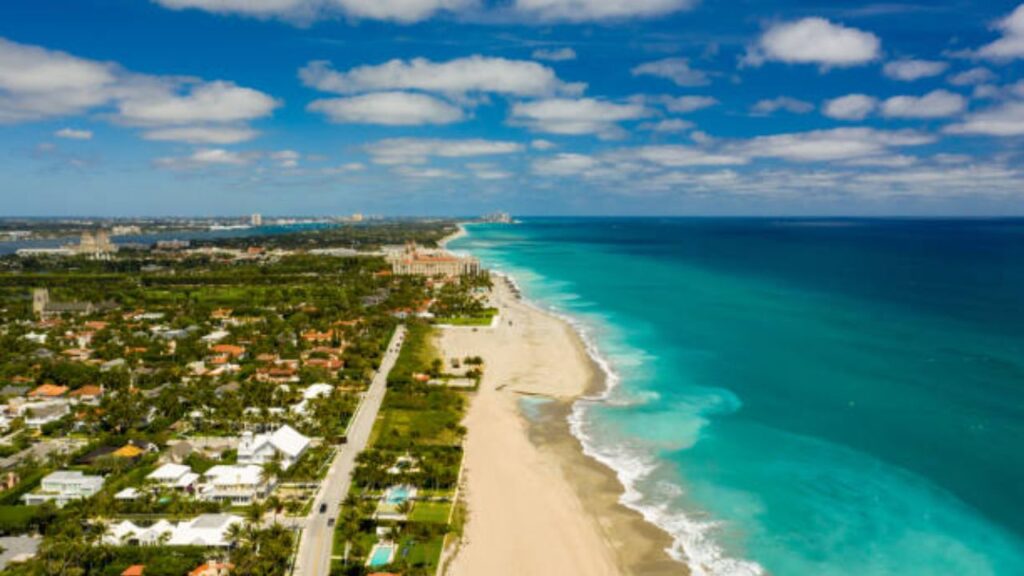Palm Beach County, Florida, is the third most populated county in the state and one of the wealthiest in the country. It has around 1.5 million residents as of the 2020 census. The median household income in the county for 2021 was $70,002, which is higher than both the state average of $59,227 and the national average of $67,521. In 2021, the poverty rate in Palm Beach County was 11.4%, which is lower than the state’s rate of 13.1% and the national rate of 12.8%.
However, not all parts of Palm Beach County share the same level of wealth and prosperity. Some neighborhoods encounter challenges like low income, high poverty, high unemployment, limited education, and a lack of access to healthcare and social services. In this article, we will examine five of the county’s poorest neighborhoods using data from the U.S. Census Bureau’s American Community Survey (ACS) 2017-2021 estimates. We will use these indicators to assess poverty:
- Median household income: The middle point of income for all households in a neighborhood.
- Poverty rate: The percentage of people with income below the poverty threshold for their household size and composition.
- Unemployment rate: The percentage of people in the workforce without employment.
- Educational attainment: The percentage of individuals aged 25 and above who have completed high school or attained higher education.
1. Lake Worth Corridor
Lake Worth Corridor is a suburban area in central Palm Beach County, situated along Lake Worth Road. It’s primarily composed of single-family homes and apartments and has around 36,000 residents, mainly of Hispanic descent. However, it faces significant socioeconomic challenges. Based on ACS data:
- The median household income is $34,112, significantly lower (51.3%) than the county average and nearly half (49.5%) of the national average.
- The poverty rate stands at 28%, more than twice as high as both the county and national rates.
- The unemployment rate is 9%, exceeding the county and national averages.
- Approximately 63% of adults in the area have completed high school or attained higher education, indicating that not quite two-thirds have achieved this level of education.
Also Read:
2. Belle Glade
Belle Glade, a city in western Palm Beach County near Lake Okeechobee, is a rural area mainly dependent on sugarcane farming. It’s home to around 19,000 residents, mostly Black or African American. Unfortunately, it faces significant economic challenges, as per ACS data:
- The median household income is $26,859, significantly lower (61.6%) than the county median and also 60.2% lower than the national median.
- The poverty rate stands at 38%, which is more than three times higher than the county average and nearly three times higher than the national average.
- Unemployment is at 16%, almost double the county rate and more than twice the national rate.
- About 64% of adults in Belle Glade have completed high school or higher education, meaning roughly two-thirds have achieved this level of education.
Also Read:
3. Pahokee
Pahokee, situated in western Palm Beach County near Lake Okeechobee, is a rural area heavily reliant on agriculture, especially sugarcane farming. It has a population of around 6,000, primarily made up of Black or African American residents. Despite its natural beauty, Pahokee faces significant economic challenges. Here are some key statistics from ACS data:
- The median household income is $25,625, which is 63.4% lower than the county median and 62% lower than the national median.
- The poverty rate stands at 40%, more than three times higher than the county rate and the national rate.
- Unemployment is at 18%, over twice as high as the county and national rates.
- About 66% of adults have completed high school or higher education, indicating that only two-thirds of the adult population have reached this educational level.
Also Read:
4. Riviera Beach
Riviera Beach is a city on the eastern coast of Palm Beach County by the Atlantic Ocean. It’s a diverse urban area with a mix of Hispanic, African American, White, and Asian residents. Around 35,000 people live there. Unfortunately, it faces significant socioeconomic challenges. Here are some key statistics from ACS data:
- Median household income is $43,667, which is much lower than the county and national medians.
- The poverty rate stands at 23%, which is twice as high as the county and almost double the national rate.
- Unemployment is at 10%, higher than the county and national averages.
- About 80% of adults in Riviera Beach have completed high school or higher education.
Also Read:
5. Lake Park
Lake Park is a suburban town in eastern Palm Beach County along the Intracoastal Waterway. It has a diverse population, including Hispanics, African Americans, Whites, and Asians, with around 9,000 residents. Unfortunately, it faces significant economic challenges:
- The median household income is $44,167, which is 37% lower than the county average and 34.6% lower than the national average.
- The poverty rate is 22%, almost double the county and national rates.
- Unemployment stands at 9%, higher than both the county and national rates.
- About 81% of adults have completed high school or higher education.
Also Read:
Conclusion
Palm Beach County, Florida, is both diverse and wealthy, offering a high standard of living and a robust economy. However, there are significant differences in income, poverty, job opportunities, and education across its neighborhoods. Some of the least affluent areas in Palm Beach County include Lake Worth Corridor, Belle Glade, Pahokee, Riviera Beach, and Lake Park.
These communities encounter several difficulties like limited income, high poverty rates, joblessness, low educational attainment, and inadequate access to healthcare and social services. These issues impact residents’ well-being and life quality, necessitating collaborative efforts from various stakeholders to address them.


